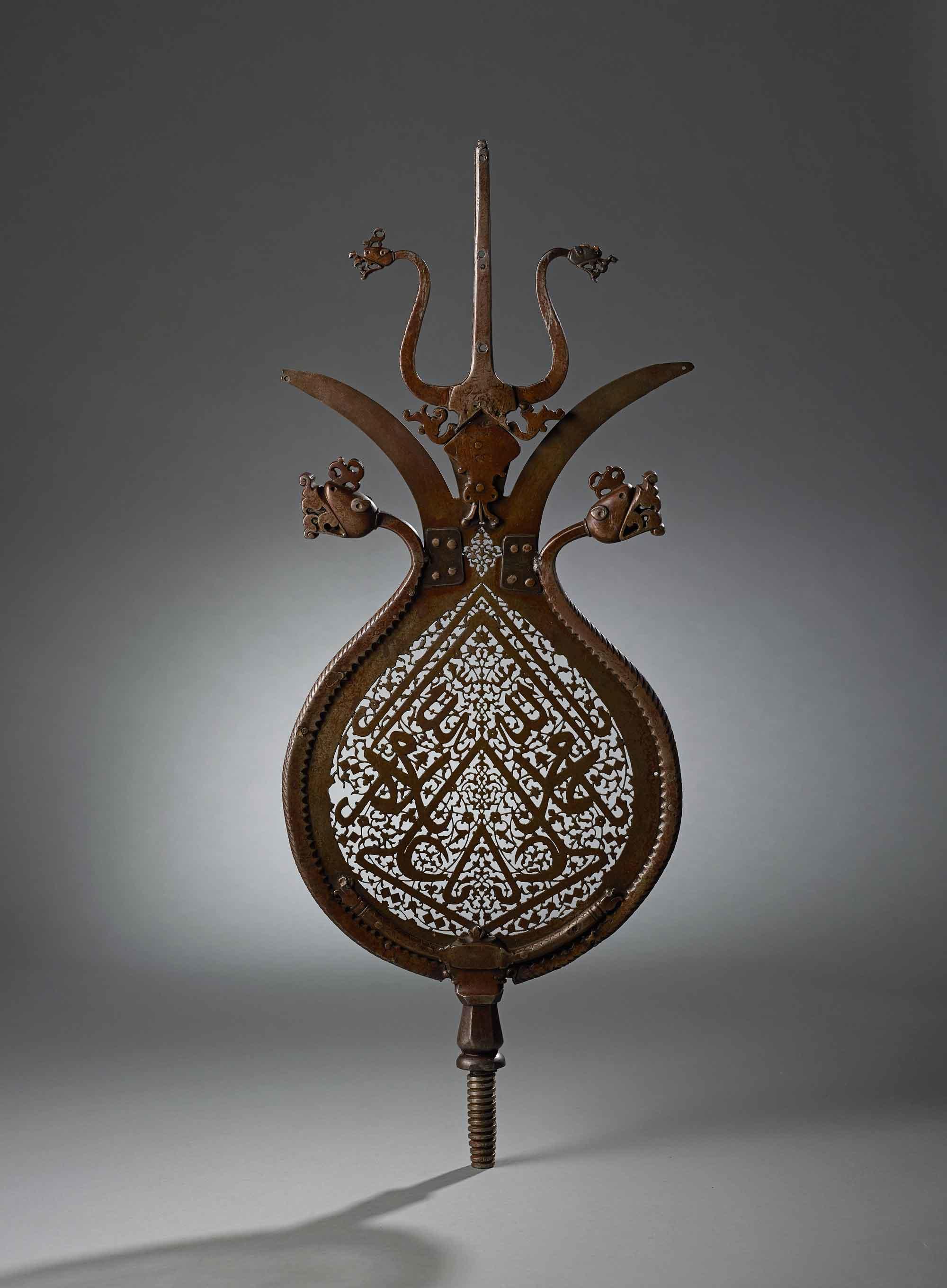Click on the image to zoom
Processional Standard (‘Alam)
- Accession Number:AKM679
- Place:Iran or India (Historic Hindustan)
- Dimensions:82 x 32.5 cm
- Date:16th century
- Materials and Technique:Pierced steel
Processional standards (‘alams) are used in Shia processions, particularly on the day of ‘Ashura, the tenth day of the month of Muharram, to commemorate the martyrdom of the Prophet Muhammad’s grandson, al-Hosayn, the son of ‘Ali, in the seventh century in Karbala’, Iraq. In this openwork ‘alam, the form, decorative elements, and function are closely intertwined. The bifurcated blades on the top of the pear-shaped body of this beautifully carved ‘alam are a symbolic reference to the first Shia imam, ‘Ali, the Prophet’s son-in-law, who is known by the epithet dhu’l-fiqar in reference to his bifurcated sword. ‘Ali is also referred to by name in the mirror-image inscription on the central field of this ‘alam: ya Allah ya Muhammad ya ‘Ali, calling upon God, Muhammad, and ‘Ali for support. The symmetrical formation of the invocation ya ‘Ali in the inscription is usually seen as depicting the stylized face of a lion, another symbolic reference to the first imam.
Note: This online resource is reviewed and updated on an ongoing basis. We are committed to improving this information and will revise and update knowledge about this object as it becomes available.


